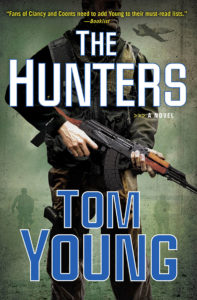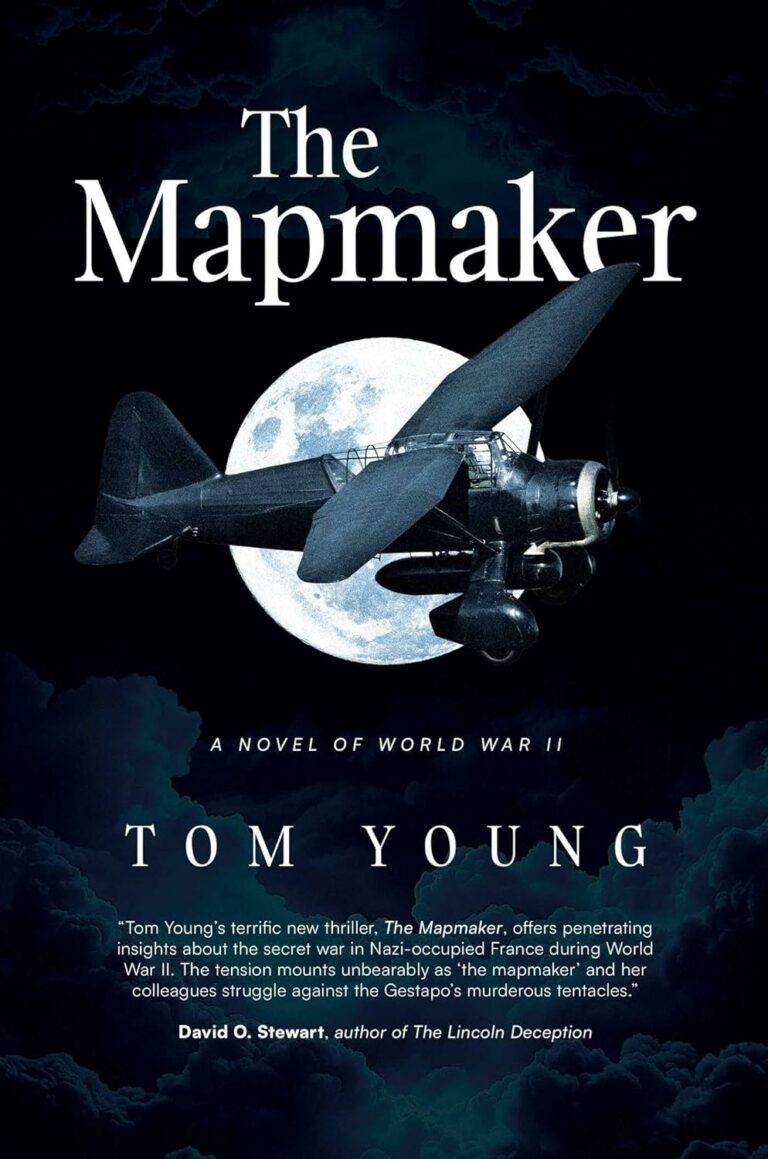The Hunters Backstory
In the late 90s, some of my squadron mates approached me with a civilian job opportunity. A charitable group wanted qualified C-130 flight crews. The organization planned to use donations to buy a small fleet of C-130 cargo planes and fly relief missions all over the world.
The group liked my résumé enough to ask me to come in for an interview . . . and the project never went beyond that stage. Perhaps the organization could not raise enough money to buy an airplane, or maybe there were other complications. For one reason or another, the good intentions never got off the ground, literally or figuratively.
But I’ve always thought: That was a really cool idea. What could have made it work?
What if they’d settled for a less expensive, less sophisticated airplane? What if they’d recruited unpaid volunteers to fly part-time? Could they have pulled it off with a rattletrap old DC-3?
In The Hunters, I send Parson and crew on that flight of imagination, bringing them in for a landing in Somalia. Their fates become intertwined with that of Hussein, a teenage al-Shabaab gunman who comes to face a split-second decision that will set the course for the rest of his life.
The reader has every right to ask: How likely a story is Hussein’s?
Certainly, Hussein’s decision would not be common for someone in his circumstances; once people become radicalized, it’s hard to bring them back. But though Hussein is burdened by poverty, illiteracy, and the loss of his parents, he’s blessed with natural intelligence. He thinks for himself.
Occasionally, news reports highlight the journey of a defector from a terrorist group such as ISIS. A common pattern often emerges: A young person seeks escape from bad circumstances and winds up with something even worse. But unlike most of his comrades in terror, he has the sense to question the group’s propaganda, and finds himself repelled by pointless brutality.
In Hussein’s case, an injury forces him to sit, listen, and observe instead of striking out. What he learns gives his intellect something to work with; he realizes he doesn’t know what he doesn’t know. He watches a crew of current and former military personnel work in a mutually supportive way, and his mind opens enough to see new possibilities for himself.
Parson’s memories of military missions in Somalia are informed by real-world events. My own missions have often taken me to Djibouti, next door to Somalia in the Horn of Africa, and Djibouti provides the setting for some early scenes in The Hunters.
Two of those Djibouti missions stand out in my memory.
One day in 2003, my crewmates and I delivered cargo to the air base in Djibouti, then we departed for a return leg to our temporary home base in the Middle East. We lifted off in our C-130, headed out over the Indian Ocean, and brought up the landing gear. At that moment, the biggest damned seagull in the world appeared in the windscreen.
I pointed and uttered one syllable: “Bird!”
The copilot ducked.
I don’t know the seagull’s airspeed, but ours was about one hundred and fifty knots. The gull smacked the glass with such force that it rattled the cockpit. The bird splattered all over the cockpit windows. Fortunately for us, the unfortunate gull hit a strong place on the windscreen near a metal post where two sections of glass came together. Somehow the windscreen remained intact, though smeared with blood and viscera.
Normally, when you hit a bird, you land immediately and inspect for damage. However, intel and tactics briefers had warned us of a terrorist threat in the area. Returning to Djibouti would have given the bad guys another chance to take a shot at us, so we flew on to home base. By the time we reached base, the remains of that bird had dried and frozen all over the glass. As we parked the aircraft, we saw the crew chief staring at the mess, arms folded, shaking his head as if to ask: “What have you idiots done to my airplane?” He and his team would be the ones to clean and inspect the plane before it could fly again.
On another trip to the Djibouti, we found ourselves in a bit of a scramble. We needed to offload cargo and refuel quickly, then clear the limited ramp space for other aircraft.
Standard refuel procedures called for the installation of a locking pin to keep the nose gear from collapsing on the ground. Over the years, many a C-130 flight engineer had forgotten to remove the pin after refueling—which meant that when the C-130 got airborne, the nose gear wouldn’t retract. When that happened, the crew had no choice but to return for landing so the embarrassed engineer could remove the pin.
To guard against that mistake, I made a habit of placing the pin in a slot on the back of the copilot’s seat. I would then hang my helmet bag on the pin. If I saw my helmet bag sitting on the floor instead of hanging from the back of the copilot’s seat, I knew I had not removed the nose pin.
You really didn’t want to forget the nose pin in Djibouti and have to turn back and land, for the same reason we didn’t want to come back after the bird strike: unpleasant characters with AKs and shoulder-launched missiles.
However, on this busy day at Camp Lemonnier, with C-130s zooming in and out, helicopters clattering overhead, and sweat soaking my flight suit, I did something I had never done in thousands of hours of flying: As I strapped in, I failed to glance at the back of the copilot’s seat to confirm that my helmet bag was hanging on the nose pin.
We began running the engine start checklist. Purely as a courtesy, not required by any regulation, my good friend Roland Shambaugh called on interphone: “Engineer, loadmaster. You got the nose pin?”
“Got it, load, but thanks— ” I looked to my right. My helmet bag was on the floor.
“Uh, I mean thanks so much for asking, Shammy,” I continued. “Ah, can you bring me that damned pin?”
“No problem, Tommy.”
Sharp crew members look after one another, and that’s what Hussein observes as he watches Parson, Gold, Chartier, and Geedi interact. He sees another way of living and working. In the final battle scene, he makes a split-second decision that sends his life in a new direction.
Of course, very few young terrorist recruits have the insight, courage, and opportunity to make such a choice. But I’d like to think Hussein represents the spark of good within humanity that allows for hope in a bloody and violent world.

